Today Current Affairs: 29th October 2021 for UPSC IAS exams, State PSC exams, SSC CGL, State SSC, RRB, Railways, Banking Exam & IBPS, etc
Table of Contents
Mahatma Gandhi National Fellowship: Phase II

The government has launched the phase-II of Mahatma Gandhi National Fellowship under SANKALP (Skill Acquisition and Knowledge Awareness for Livelihood Promotion) programme.
- SANKALP, a Centrally sponsored scheme, is a World Bank loan assisted program, launched by the Ministry of Skill Development and Entrepreneurship in January 2018.
- SANKALP engages with District Skill Committees (DSCs) to effectively reduce the mismatch between the supply and demand of skilled manpower in the country, thereby creating decent opportunities for the youth to work and earn.
- It is a two-year long fellowship programme conceived to create opportunities for young, dynamic individuals to contribute to enhancing skill development at the grassroots.
- MGNF Phase-I (Pilot): Launched in 2019 with IIM Bangalore as Academic Partner and 69 are Fellows currently deployed in 69 districts across 6 States.
- MGNF Phase-II (National Roll Out): Being launched in October 2021 with 661 MGNFs who will be deployed across all districts of the country. 8 more IIMs have been boarded taking the total to 9 IIMs.
- It seeks to combine classroom sessions by academic partner IIMs with an intensive field immersion at the district level to create credible plans and identify barriers in raising employment, economic output, and promote livelihoods in rural areas.
- The sharp focus on developing skills for local needs gives impetus to the “vocal for local”, and also building an industry-relevant skill base will help the cause of “Atmanirbhar Bharat”.
- Eligibility: Fellows have to be in the 21-30 years age-group, have a graduation degree from a recognized university and be citizens of India. Proficiency in official language of the state of fieldwork will be mandatory.
Climate Vulnerability Index:

A report titled “Mapping India’s Climate Vulnerability – A District-level Assessment” has been released by the Council on Energy, Environment and Water (CEEW) (not-for-profit policy research institution).
- The report has also launched the first-of-its-kind Climate Vulnerability Index.
- The index has analysed 640 districts in India and found that 463 of these are vulnerable to extreme floods, droughts and cyclones.
- Affected States: 27 Indian states and Union territories are vulnerable to extreme climate events which often disrupt the local economy and displace weaker communities.
- The states of Assam, Andhra Pradesh, Maharashtra, Karnataka and Bihar are the most vulnerable to extreme climate events such as floods, droughts and cyclones in India.
- Magnitude of Impact of Climate Change: More than 80% of Indians live in districts vulnerable to climate risks.
- 17 of 20 people in the country are vulnerable to climate risks, out of which every five Indians live in areas that are extremely vulnerable.
- More than 45% of these districts have undergone “unsustainable landscape and infrastructure changes”.
- Low-level of Adaptability: More than 60% of Indian districts have medium to low adaptive capacity in handling extreme weather events.
- Role of Anthropogenic Activities: The anthropogenic activity has already made vulnerable districts become even more vulnerable to impacts of natural disasters. Some of the activities has led to:
- Loss of wetlands and loss in mangroves which would act as a natural barrier, making it more vulnerable.
- Landscape disruptions such as the disappearance of forest cover, over-construction, have led to degradation of natural ecosystems.
Triggering Financial Crisis: Combating the rising frequency and scale of extreme climate events is fiscally draining for developing countries such as India. - Investments in infrastructure such as housing, transport, and industries will be threatened by these events, especially along the coasts, adding that mounting weather-related insurance losses could trigger the next financial crisis.
India-Us Defence Deal:

The Ministry of Defence has signed a deal with the US Government for procurement of MK 54 Torpedo and Expendable (Chaff and Flares) for the Indian Navy, under Foreign Military Sale (FMS).
- FMS is the U.S. Government’s program for transferring defense articles, services, and training to its international partners and international organizations.
- Expendables are something which can be consumed or used during flight and can not be recovered.
MK 54 Torpedo:
- It is a cigar-shaped, self-propelled underwater missile, launched from a submarine, surface vessel, or airplane and designed for exploding upon contact with the hulls of surface vessels and submarines.
- The MK 54 uses sophisticated processing algorithms to analyze the information, edit out false targets or countermeasures, and then pursue identified threats.
- The primary use of this equipment is for offensive purposes when deployed by anti-submarine warfare aircraft and helicopters, and for defensive purposes when deployed by ships and against fast, deep-diving nuclear submarines and slow-moving, quiet, diesel-electric submarines.
- India intends to use the Mk 54 torpedoes on its P-8I patrol aircraft.
Ram Katha Park: Renamed As Queen Heo Hwang-ok Memorial Park
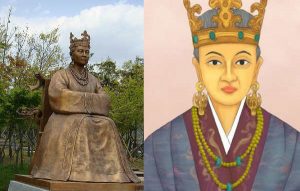
On the banks of the Sarayu in Ayodhya, the Ram Katha Park has been renovated which will be renamed as Queen Heo Hwang-ok memorial park. The Korean queen is believed to have had Indian roots.
- In 2000, India and South Korea signed an agreement to develop Ayodhya and Gimhae as sister cities.
- Earlier, in March 2021 Indian Defence Minister and his South Korean counterpart inaugurated the India-Korea Friendship Park in a ceremony at the Delhi Cantonment.
- She was a Korean queen who is believed to have been born Princess Suriratna of Ayodhya, daughter of King Padmasen and Indumati.
- Padmasen ruled the ancient kingdom of Kausala (Kosala), a region that extended from present-day UP to Odisha.
- The memorial park now comprises Queen and King pavilions with their busts in place, and a pond to represent Princess Suriratna’s journey.
- Her story is described in Samguk Yusa (Memorabilia of Three Kingdoms).
- It is a 13th-century collection of legends, folktales and history of Korea’s three kingdoms — Goguryeo, Baekje and Silla — and some other regions.
- In 48 BC, the princess travelled to Korea from the ancient land of ‘Ayuta’ and married Kim Suro, founder and King of Geumgwan Gaya in south-eastern Korea.
- There is no consensus among historians on the location of ‘Ayuta’ as some historians believe that the princess could actually be from Thailand ’s Ayutthaya kingdom.
- While in the popular imagination, it is associated with Ayodhya in Uttar Pradesh, there is no Indian account of the legend.
Judicial Review In Matters Related To National Security:
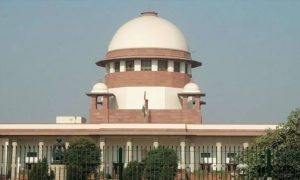
Supreme Court has made few observations regarding the applicability of judicial review in matters related to ‘National Security’ of the Country.
- The Court was responding to submissions made by Solicitor-General for the Centre, in the Pegasus snooping case.
- The government had refused the court’s repeated advice to file a detailed affidavit responding to the snooping allegations, blankly stating that “the disclosure of certain facts might affect the national security and defence of the nation”.
Observations made by the Court:
- The state cannot keep a secret from the court merely on the bogey of “national security” and expect the judiciary to remain a “mute spectator”.
- The claim has to be backed by evidence to prove that the disclosure of the information sought by the court would affect national security concerns.
- National security cannot be the bugbear that the judiciary shies away from, by virtue of its mere mentioning.
- The court accepted that judicial review in national security matters was limited. However, the court’s delicacy did not licence the Government to call for an “omnibus prohibition” against judicial review.
- The mere invocation of national security by the state does not render the court a mute spectator.
Judicial Review:
- Judicial review is the power of Judiciary to review any act or order of Legislative and Executive wings and to pronounce upon the constitutional validity when challenged by the affected person.
- The power of Judicial Review comes from the Constitution of India itself (Articles 13, 32, 136, 142 and 147 of the Constitution).
- The power of judicial review is evoked to protect and enforce the fundamental rights guaranteed in Part III of the Constitution.
- Article 13 of the Constitution prohibits the Parliament and the state legislatures from making laws that “may take away or abridge the fundamental rights” guaranteed to the citizens of the country.
- The provisions of Article 13 ensure the protection of the fundamental rights and consider any law “inconsistent with or in derogation of the fundamental rights” as void.
Amendments To The Registration Of Births And Deaths Act, 1969:
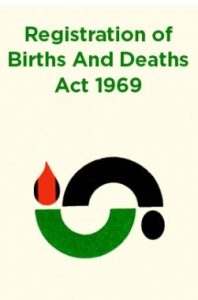
The Centre has proposed amendments to the Registration of Births and Deaths Act, 1969 that will enable it to “maintain the database of registered birth and deaths at the national level”.
- Presently, the registration of births and deaths is done by the local registrar appointed by States.
- The database may be used to update the Population Register and the electoral register, and Aadhaar, ration card, passport and driving licence databases.
Proposed amendments by the Centre:
- It is proposed that the Chief Registrar (appointed by the States) would maintain a unified database at the State level and integrate it with the data at the “national level,” maintained by the Registrar General of India (RGI).
- The amendments will imply that the Centre will be a parallel repository of data.
- “Special Sub-Registrars” shall be appointed, in the event of disaster, with any or all of his powers and duties for on the spot registration of deaths and issuance of extract thereof, as may be prescribed.”
Asian Development Bank (ADB):
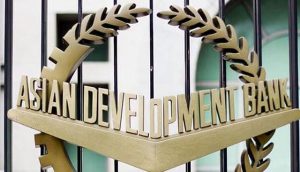
The Indian government and the Asian Development Bank (ADB) signed a USD 4.5 million Project Readiness Financing (PRF) loan to support urban mobility in Mizoram.
- Earlier, the ADB and the Government of India signed a USD 484 million loan to improve transport connectivity and industrial development in the Chennai – Kanyakumari Industrial Corridor (CKIC) in Tamil Nadu.
- PRF supports high implementation readiness for projects that are expected to be financed by ADB.
- Urban mobility in Aizawl, the center of Mizoram’s administrative and service industry, is severely constrained due to rapid and unplanned urbanization.
- This results in traffic congestion on narrow road widths, and adversely impacts road safety, efficiency in movement of people and goods, and environmental sustainability.
- The ensuing project, being developed through the project readiness financing, seeks to resolve the city’s transport problems by adopting sustainable urban mobility solutions.
- It will help develop institutional capacity of the state’s Urban Development and Poverty Alleviation Department in pre-implementation and project preparation activities.
- The PRF will develop a Comprehensive Mobility Plan (CMP) for Aizawl that outlines the urban transport development strategy and build synergies with urban development planning initiatives in the state, and promote climate and disaster resilience, and gender inclusiveness in its interventions.
- CMP will facilitate an optimised use of capital in relevant projects, and enhance the economic competitiveness of cities by improving logistics and access to jobs, basic services, education, etc.
Asian Development Bank:
- It is a regional development bank established on 19th December 1966. It is headquartered in Manila, Philippines.
- It now has 68 members, 49 from within Asia.
- India is one of the members.
- It’s five largest shareholders are Japan and the United States (each with 15.6% of total shares), the People’s Republic of China (6.4%), India (6.3%), and Australia (5.8%).
- It aims to promote social and economic development in Asia and the Pacific.
Pegasus: A Spyware Developed By Israeli Firm NSO Group

A three-member committee has been appointed by the Supreme Court to look into allegations of unauthorised surveillance using Pegasus, a spyware developed by Israeli firm NSO Group.
- The committee members are Dr Naveen Kumar Chaudhary, Dean of National Forensic Sciences University in Gandhinagar; Dr Prabaharan P, Professor at Amrita Vishwa Vidyapeetham in Kerala; and Dr Ashwin Anil Gumaste, Institute Chair Associate Professor at Indian Institute of Technology, Bombay.
- It will be supervised by retired judge Justice R V Raveendran.
- The former Supreme Court Justice is a highly-respected member of the law community, and was recently referred by Chief Justice of India NV Ramana as “one of the legends who have increased the prestige of the Supreme Court of India”.
- Justice Raveendran served as judge of the Supreme Court from September 9, 2005 to October 15, 2011.
- Before that, he was Chief Justice of Madhya Pradesh High Court.
- Justice Raveendran was part of the R M Lodha Committee appointed by the SC in 2015 to reform the BCCI.
Agni 5:
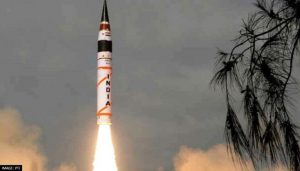
India successfully tests nuclear-capable Agni-V ballistic missile.
- The Agni-V Intercontinental-range Ballistic Missile (ICBM) has been developed by the Defence Research & Development Organisation (DRDO) and Bharat Dynamics Limited.
- It weighs close to 50,000 kilograms. The missile is 1.75 meters tall with a diameter of two metres.
- The 1,500-kilogram warhead will be placed on top of the three-stage rocket boosters powered by solid fuel.
- The missile can range the whole of Asia, Europe and parts of Africa. Once inducted, Agni-V will be maintained by the Strategic Forces command.
- India has already conducted seven trials of the missile, which has a range of over 5,000 kilometres




